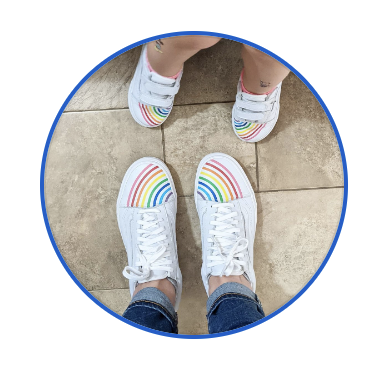This post may contain affiliate links. Every link is hand-selected by our team, and it isn’t dependent on receiving a commission. You can view our full policy here.
Sometimes, life rattles you to your core, and the little things that used to annoy you pale in comparison to what you’re dealing with now. Or with what you’ve dealt with in the past, which keeps coming up (often at 3 a.m.) to haunt you.
No matter whether you’re dealing with an issue big or small, if you can’t get it out of your head, it’s time to address it. That’s a big reason why I started this site; to enjoy the now, especially when things get rough. That’s also why, when I found this simple journal prompt in Arthur C. Brooks’s and Oprah Winfrey’s book, Build the Life You Want, I had to share it.
The book combines research and studies, along with anecdotal evidence, to share what’s helped people live happier, more fulfilling lives, and a big part of that is learning to manage your emotions without letting them control you.
When your mind keeps going back to something that’s bothering you, remember this:
“Your emotions are signals to your conscious brain that something is going on that requires your attention and action—that’s all they are. Your conscious brain, if you choose to use it, gets to decide how you will respond to them,” Brooks shares.
Winfrey simplifies this further: “All the times when you’ve felt overwhelmed by your feelings, when it’s felt as though you’re a prisoner of those feelings, when it’s seemed as though the feelings are driving the bus and the best you can do is buckle up—you don’t have to live like that anymore. There are strategies you can use to take back the wheel.”
They’re quick to add it doesn’t mean you’ll never have negative feelings again—in fact, they argue those feelings are good (they’re alerting you to a problem, after all)—but this journal prompt is a great step is making them more useful to you.
Here’s Arthur and Oprah’s Journal Exercise for Metacognition:
That sounds fancy, but really, all it means is offering you a new way to think about your thoughts. Here’s what to do:
1. Reserve a section of your journal for painful experiences.
Briefly write out what happened and leave at least two lines underneath: one for a one-month reflection, one for a six-month one. Why? “Scholars have shown that when people reflect on difficult experiences with the explicit goal of finding meaning and improving themselves, they tend to give better advice, make better decisions and solve problems more effectively,” they write.
2. One month later, revisit the painful experience and jot down something constructive you learned.
What did you learn about yourself and the overall experience in the days after? They give the example of being passed over for a promotion at work and realizing, “I mostly got over the disappointment after only about five days.”
3. Six months later, look at it again and seek a silver lining.
Did anything good come out of that experience? In the missed-promotion example, the authors share, “I started looking for a new job and found one I like better.”
This isn’t a spot to write pages and pages about what happened, but you can always take a few pages to write stream of consciousness about the event if it helps you land on what you learned or any potential benefits. What happens is you create a log of difficult moments, how you addressed them, and how you’ve grown that you can refer back to when times get tough. It not only offers perspective on the past, but it can show you that brighter futures exist when new hardships or frustrations emerge.
For more depth on this topic—and other ways to imbue your day with more meaning—I recommend checking out Build the Life You Want, available at libraries and most major bookstores (Amazon included).
Lead photo: Candace Braun Davison




